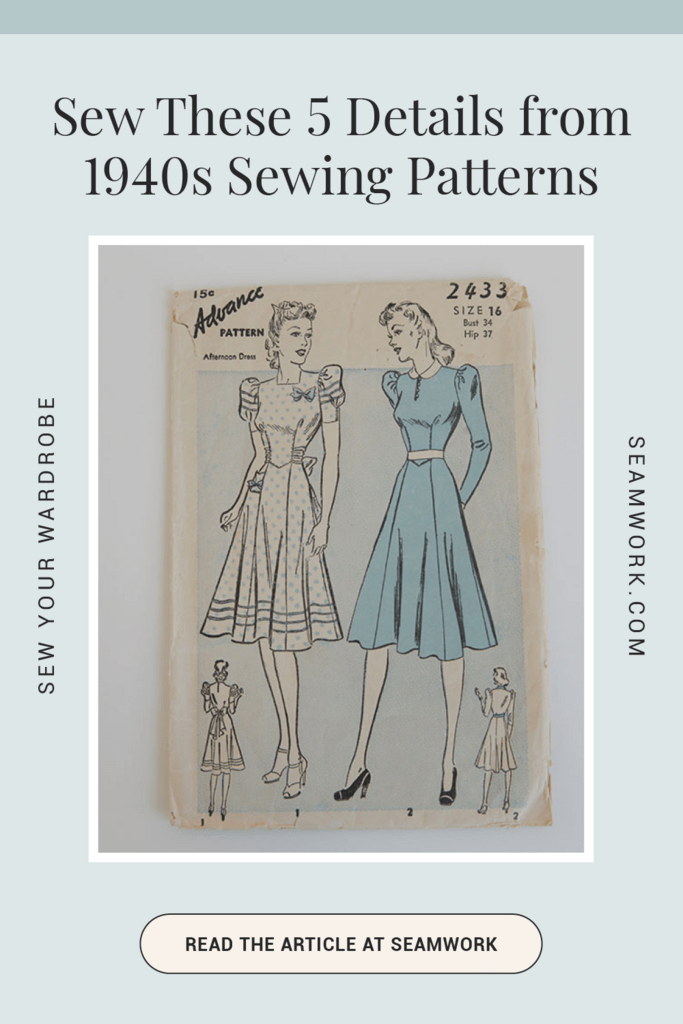If you want to make clothes that feel luxurious and intentional, seek inspiration from vintage fashion and sewing patterns.
High fashion designers constantly reference details from the past. Even if your style is really modern, vintage details add a personal, special, intentional touch to your sewing projects.
In this video, Sarai and Haley share 5 vintage details inspired by sewing patterns from the 1940s that you can incorporate into any modern sewing pattern. They'll also share some Seamwork patterns that would show off these vintage details.
What makes the 1940s special?
The fashion trends of the 1940s were significantly shaped by various constraints, particularly during the wartime period. And the scarcity of supplies led to a need for creative solutions.
Fabric and notions were in short supply, prompting people to find innovative ways to work around these limitations. This scarcity is evident in how clothing styles evolved to focus on minimizing fabric usage, resulting in distinct silhouettes.
In addition to these material constraints, the fashion of the 1940s also mirrored certain societal values, particularly noticeable in women's clothing. As women played a crucial role in supporting the war efforts by joining the workforce, their attire began to reflect a sense of strength and determination. For example, you see strong lines, such as the well-defined shoulders commonly found in dresses from that era.
Here are a few details on sewing patterns from the 1940s, along with tips to move these details to modern sewing patterns. To help you visualize this, you’ll find examples of Seamwork patterns that could easily show off each detail.
1940s Details for Modern Sewing Patterns
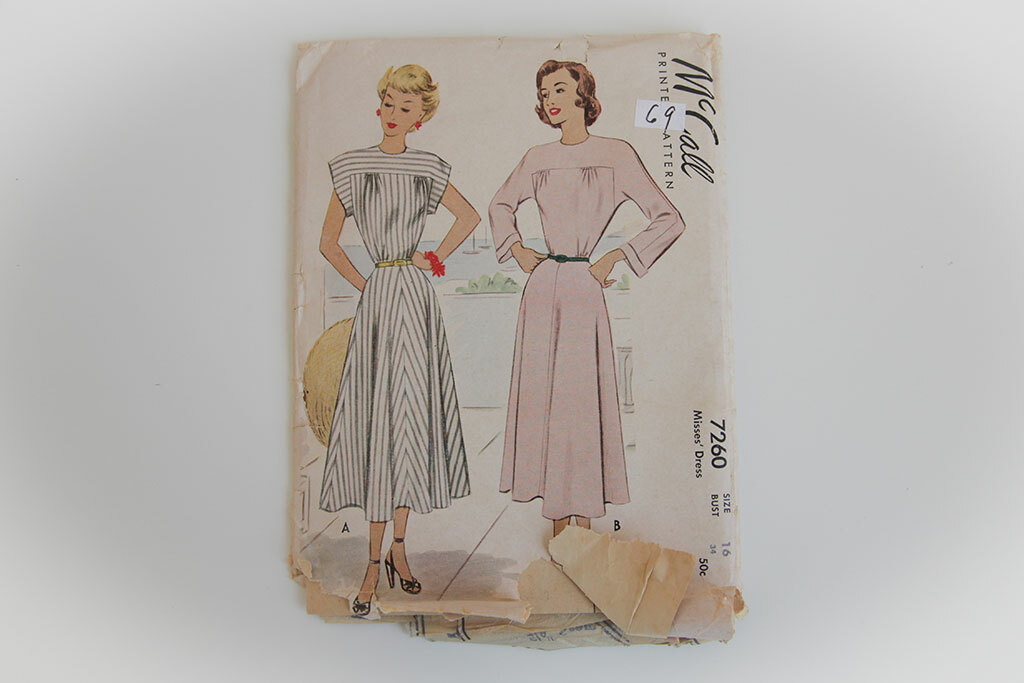
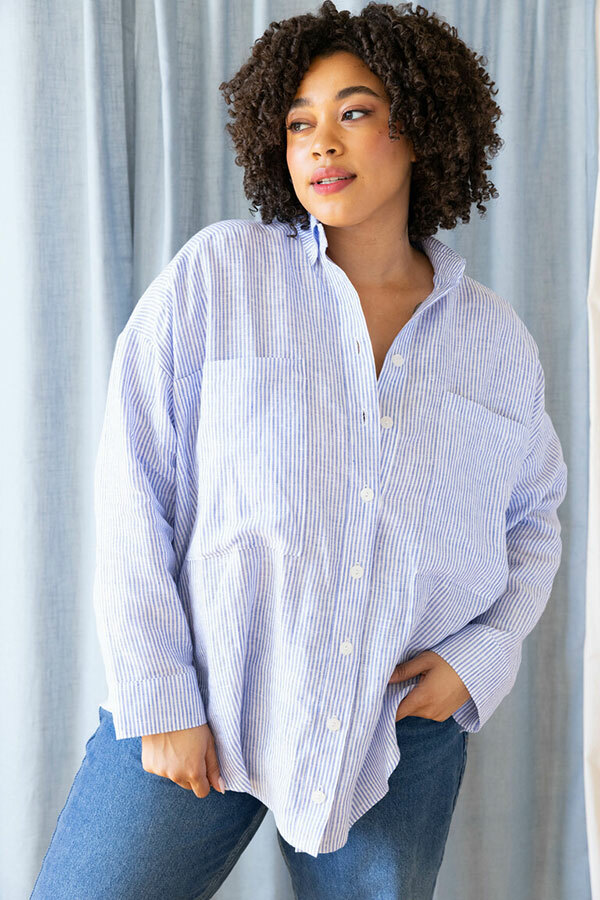
Vintage detail: Directional stripes.
This dress plays with stripes. The yoke has horizontal stripes, but the rest has vertical stripes.
How to use this detail: If your sewing pattern has extra pieces on the bodice, like a yoke, placket, or pocket, you can play with the direction of the stripes. Have fun with the cutting layouts. There are just a few things to remember. You should buy some extra fabric for new layouts. Also, any pieces you cut on the length of grain will have less stretch than they have on the crossgrain, so be mindful of that. It can help to sketch your ideas or draw new grainlines on your patterns to help you place the pieces in the right direction.
You could add this detail to the Roan button-down tunic. Change the direction of the stripes on the placket, pocket, or yoke.
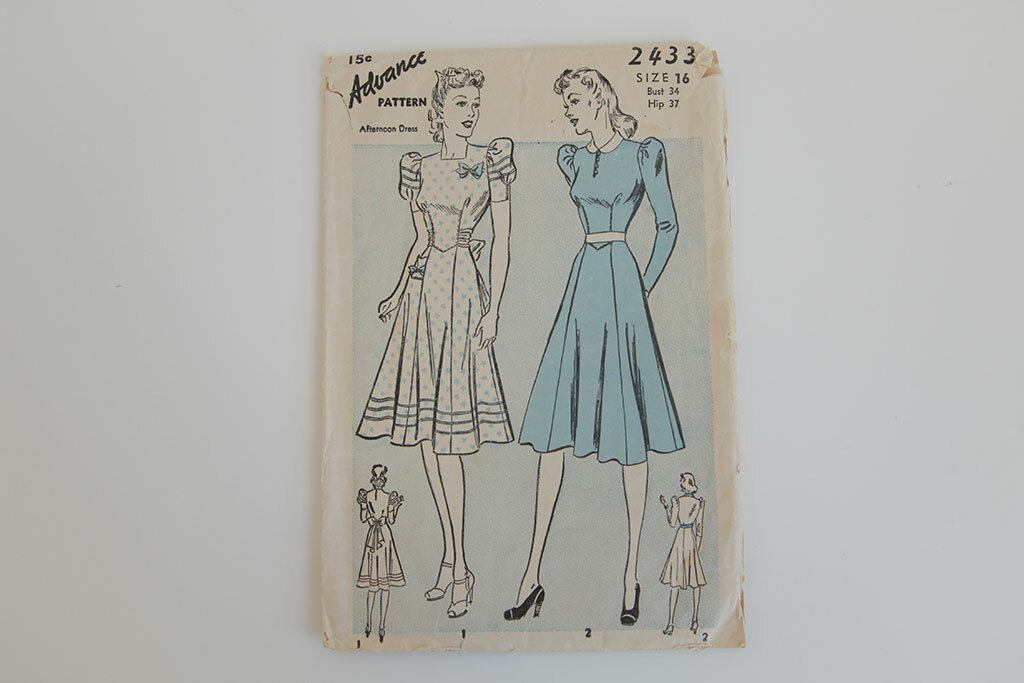
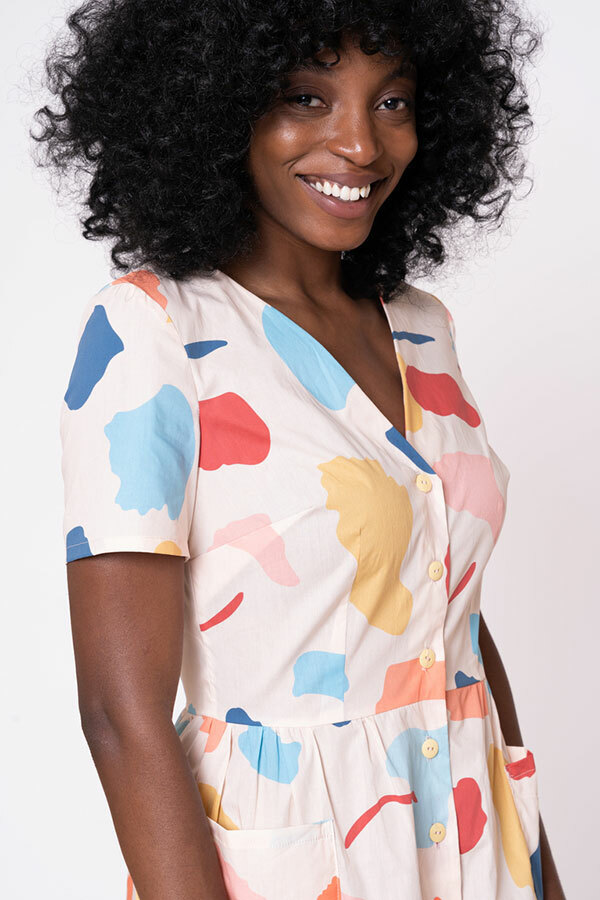
Vintage detail: Waist ties sewn into the dart
This Advanced pattern is likely from the early 1940s, and it has wide, ruched waist ties sewn directly into the waist dart.
How to use this detail: If your pattern has a waist dart, all you have to do is draft and cut a tie and then sandwich the tie between the dart legs as you sew. You could do a thin tie, multiple ties, or ties at the front and back and make them lace together.
You could do this with the Killian dress. Insert the ties into the waist darts to give the waist even more cinch.
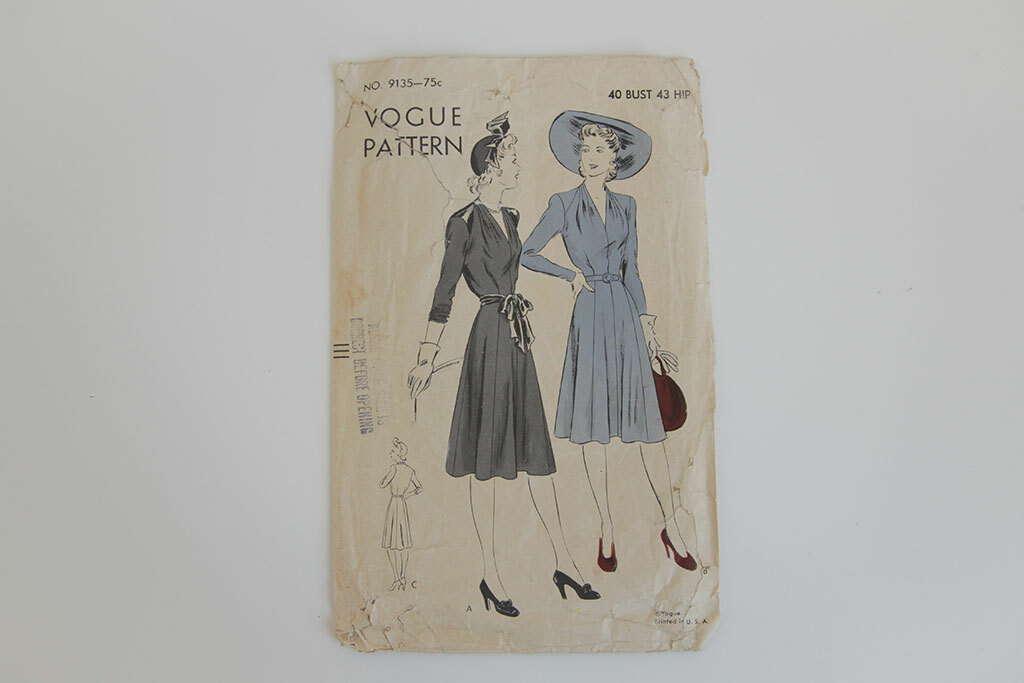
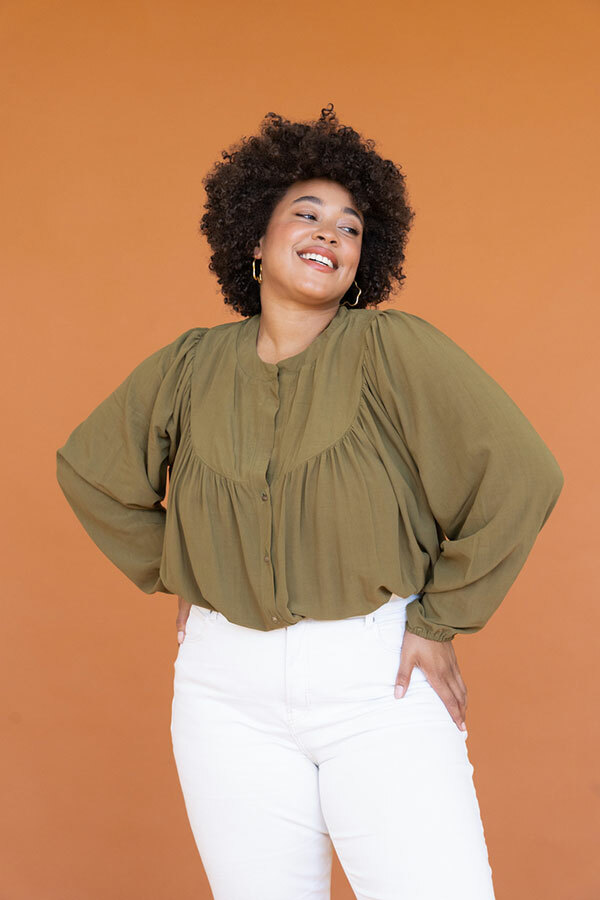
Vintage detail: Reverse fabric on yoke
This Vogue pattern has a fun detail. It uses the reverse side of the fabric for the shoulder yoke and the waist tie.
How to use this detail: All you have to do is sew those pieces with the wrong side up. You could do this on a yoke, collar, sleeves, plackets, or bias details. This works especially well with fabrics with contrasting textures on the right and wrong sides, like silk charmeuse, which is shiny on one side and matte on the other.
For a dramatic contrast, you could do this on the Aims blouse.
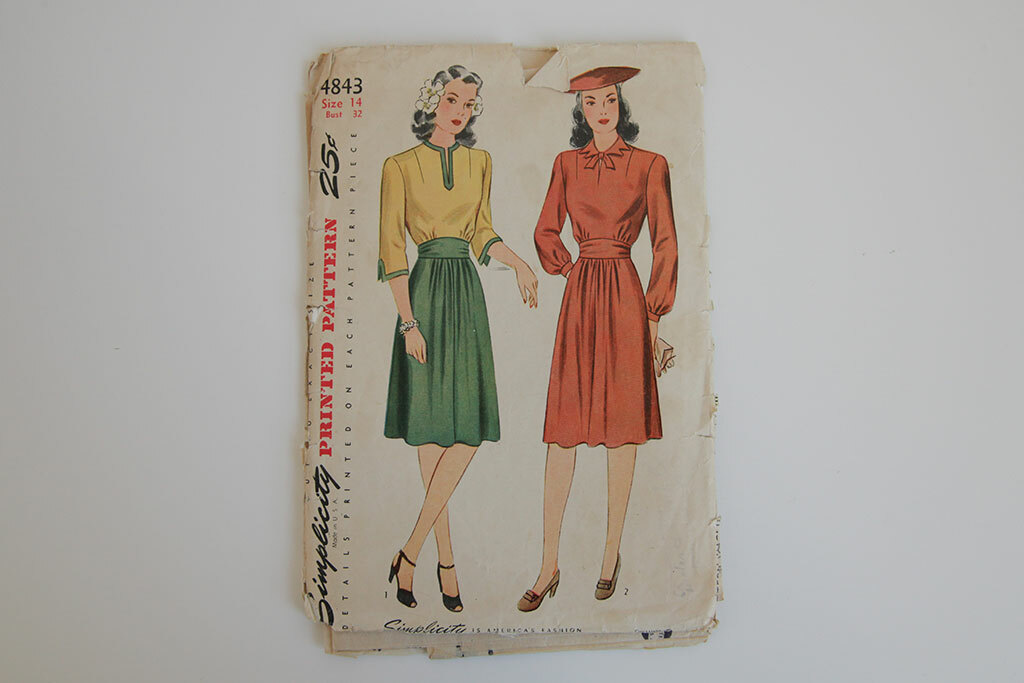
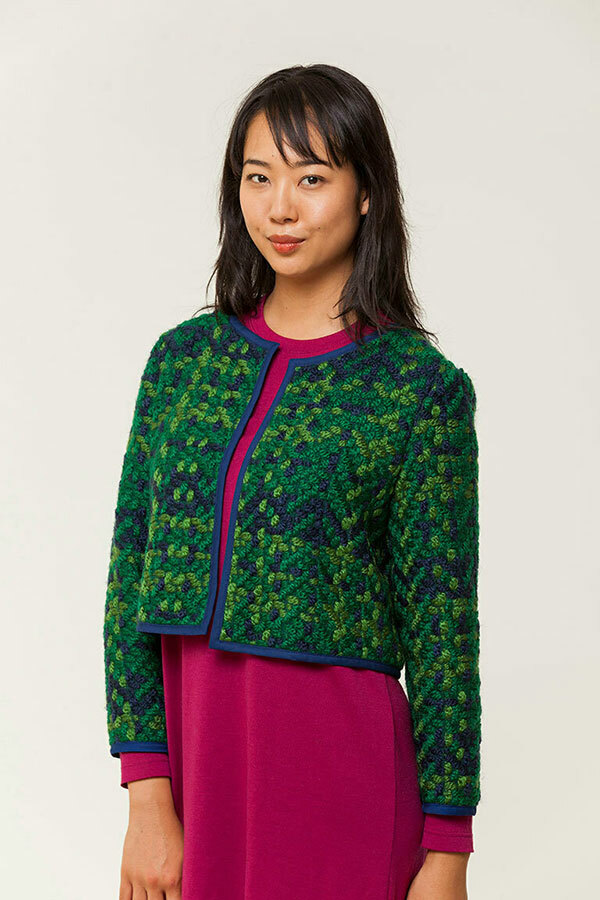
Vintage detail: Contrasting bias and color-blocking
This Simplicity pattern has a contrast bias binding along the neckline and sleeve hems and adds color blocking to the top and skirt of the dress. This makes it appear to be a two-piece outfit rather than a dress.
How to use this detail: If you have fabric scraps or smaller pieces, pair them with coordinating fabrics and strategically color block your garment. Need help color-blocking? Here’s a tutorial. Essentially, you just add seam allowance to all breaks you draw in the pattern.
You could use this on the Lilliana jacket, which already has an option for binding with a contrasting color. It’s also a good pattern for color-blocking the sleeves or the back.
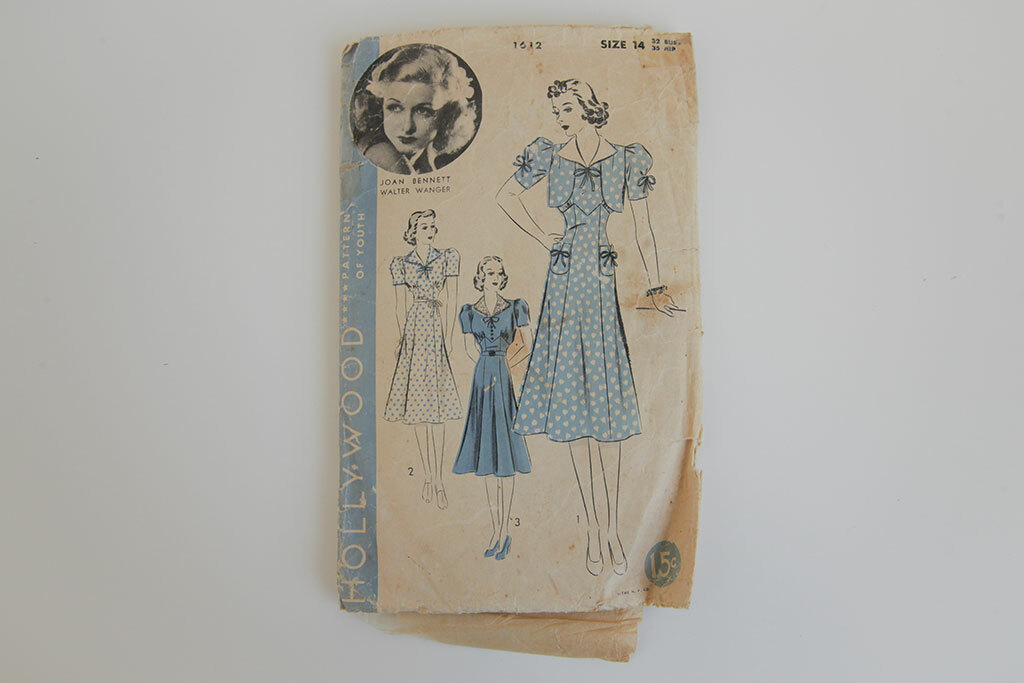
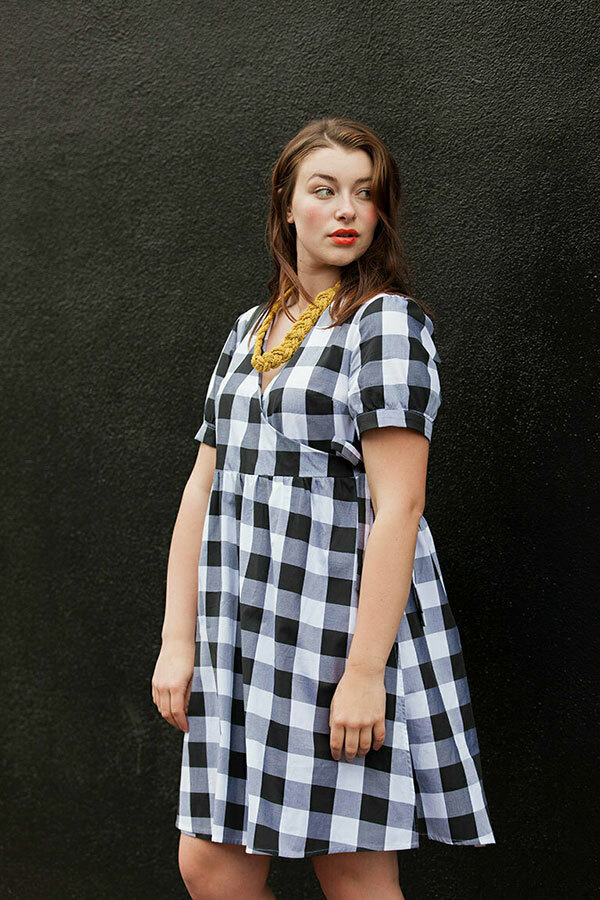
Vintage detail: A tie at the sleeve hem
This Hollywood pattern from the late 1930s or early 1940s comes with a really sweet bolero. There’s a detail on the bolero that would be fun to add to the pattern. It’s a puff sleeve that gathers around with ties.
How to use this detail: Choose a pattern with at least 6 inches (15.2 cm) of ease around the sleeve's hem. Puff sleeves and flutter sleeves work well. You need enough ease to pull the ties to cinch the sleeve at the hem.
You can add volume to a sleeve piece if your sleeve does not have enough ease. Slash and spread to give it more volume, and then once you add the ties, you can cinch it back in. Here’s a tutorial for slashing and spreading to add volume.
Once you sew your sleeve, make two ties—you could use cording, bias, or make your own—and sew them to the sleeve. Topstitch them to the sleeve at about 2 1/2 inches (6.4 cm) above the hem and tie them closed. It’s a small detail that has a big impact on your garment!
You could add this detail to the Reggie dress. Omit the cuff on the sleeves and add the tie instead. You should slash and spread the sleeves if you prefer more of a pleated or gathered look.
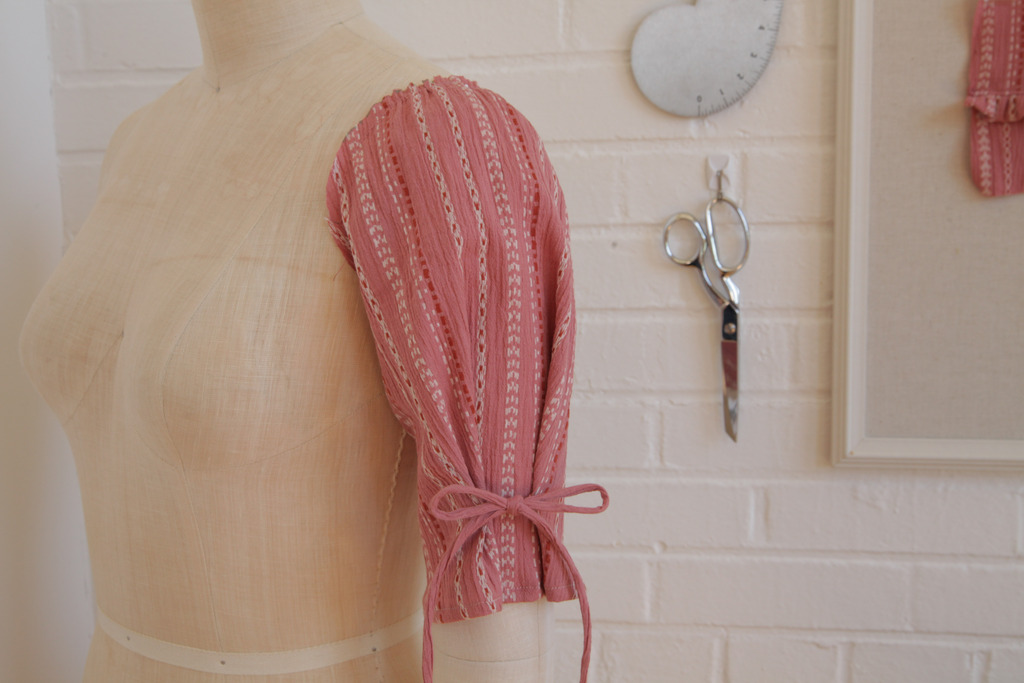
You can see the detail added to this sample sleeve. The ties are simply topstitched and you can pull them together and tie a bow or knot.
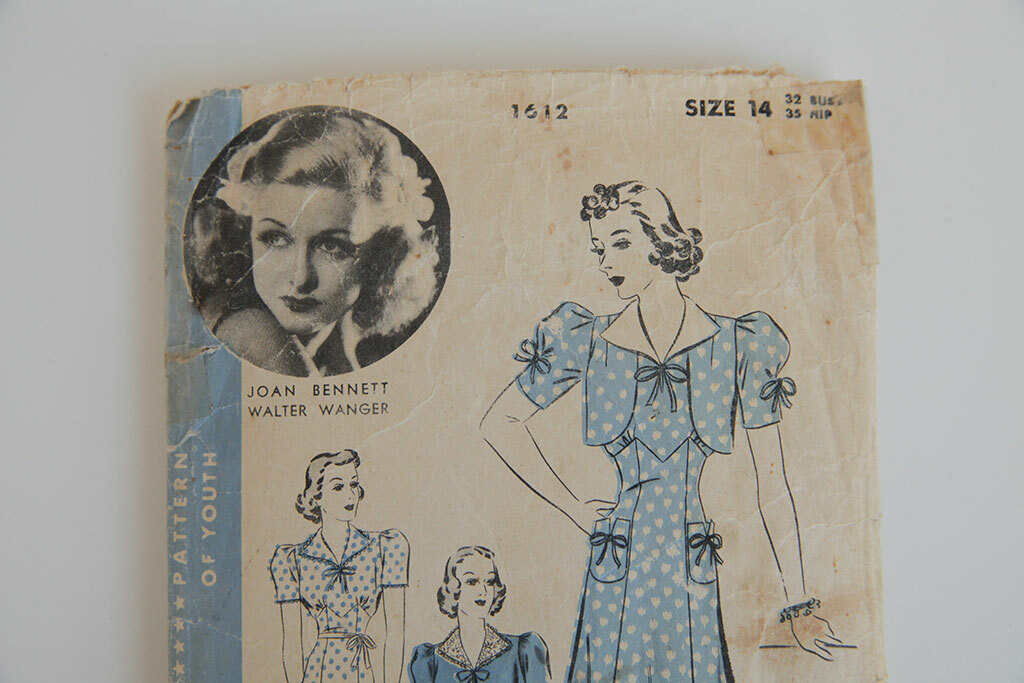
Which of these vintage details is your favorite? Are there any Seamwork patterns you’d add them to? Comment and let us know!

